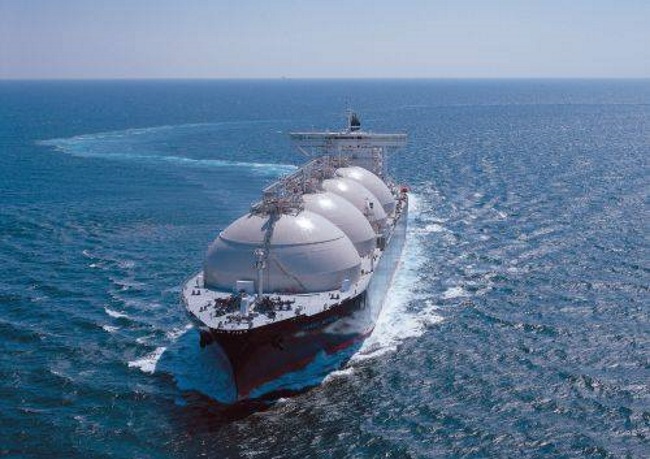Asia’s naphtha refining profit extended gains on Monday amid a drop in supply from Russia in recent weeks, although the demand from petrochemical units remained tepid.
The crack rose by about $4 to minus $20.98 a ton over Brent crude in backwardation price structure. The second-half August naphtha price traded $1 per ton higher the following month.
Naphtha arrivals to Asia dropped to about 1 million tons in June from 1.3 million tons in May, ship-tracking data from Kpler showed, reflecting refinery turnarounds.
“The supply drop started to become more visible in recent weeks when some Asian buyers cancelled tenders for August delivery, citing premium mismatches,” consultancy Energy Aspects said in a note.
The gasoline crack, on the other hand, rose to $8.45 a barrel over Brent crude on Monday.
At the deals window, 200,000 barrels of motor fuel changed hands. Vitol and Unipec bought 50,000 barrels each of benchmark grade of the fuel, while Vitol also bought 100,000 barrels of the higher 95-octane grade of gasoline.
Russia will put on hold more 38% of its primary oil refining capacity in July than originally expected, complicating the task of promised oil exports cuts, according to data from industry sources and Reuters calculations.
QatarEnergy and United Arab Emirates’ National Oil Company (ENOC) Group agreed a ten-year deal to supply condensate, a natural gas byproduct, QatarEnergy said on Monday.
Smart containers have increased in prominence in recent years, a trend that accelerated following the onset of the Covid-19 pandemic and resultant supply chain disruption, which highlighted the need for better cargo visibility to cope with longer and more volatile transit times. And the pace of adoption of smart containers is expected to accelerate over the next five years as device costs fall and first mover carriers challenge others to follow.
A container becomes “smart” when fitted with a telematics device that provides real-time tracking and monitoring, enabling operators to increase turn time of their containers and so improve equipment availability. It also allows beneficial cargo owners (BCOs) to understand the location and status of their cargo so that they can better control their supply chains.
There are a number of factors driving this market growth. Supply chain disruption and port congestion that plagued the pandemic era, provided a wake-up call for improved visibility of cargo flows and container fleet management. And despite weak market conditions, carriers have funds to invest following the recent boom in industry profitability, and see opportunities to improve the efficiency of their operations through the deployment of smart containers.
Drewry estimates that by the end of 2022 around 5.6% of the global container equipment fleet was fitted with smart technology devices following growth of 57% through the year; an acceleration from the 32% gain recorded the previous year. However, take-up varies considerably by equipment type, with penetration already strong in reefer and intermodal containers but much lower in the dry box sector. Already over half of both the maritime reefer and land based intermodal container fleets are smart-enabled, the former up from a third last year, according to Drewry estimates.
Drewry forecasts that the number of smart containers in the global fleet will accelerate over the next five years, to reach over 10 million units, representing as much as 30% of worldwide box inventories. As technological innovation lowers the cost of devices and enhances their value to both transport operators and BCOs, uptake is expected to hasten.
Smart fleet acceleration will now be driven by strong uptake in the dry container fleet where penetration is currently as little as 0.7%, according to Drewry estimates. Several carriers including Hapag-Lloyd and Japan’s ONE have publicly committed to equipping their entire dry box fleet with smart devices, the former as soon as next year. Drewry believes that these moves will force other leading carriers to follow suit. Shipping line return on investment will come from the potential to optimise their box fleet and cargo operations. Past initiatives to develop the dry smart fleet failed because they relied on BCO demand which was deterred by additional fees and lack of integration into carrier IoT service offerings.
Furthermore, digitising their container fleets will enable carriers to better control maritime supply chain information flows, enhancing their cargo visibility offering and so tethering BCO clients into longer term contractual commitments. They face increasing competition from alternative tracking solutions such as removable devices or predictive analytical tools. But to achieve this step change will require further investment to integrate smart containers into carrier IoT systems and collaboration among industry stakeholders to enable data sharing, particularly between carrier alliance and VSA partners.
In the meantime, shipping lines are expected to focus on building a critical mass of smart device installs to leverage operational benefits across their container fleets and cargo operations, while readying for the next step change in supply chain visibility service offerings.
Source: Hellenic Shipping News





